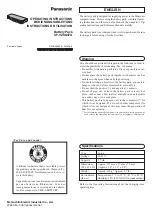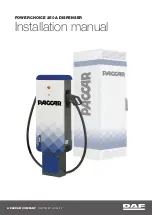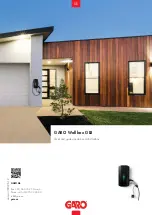
6
Installation
MOUNTING
Mount the unit in a DRY location. Allow at least 4 inches of clearance around the heat sink
fins for adequate cooling.
POWER CONNECTION
The unit is supplied with power leads about 3 feet long. This should normally be adequate to
connect to a source of power. If you must extend the power leads, be sure to use at least a
good quality (typeTEW) AWG 8 gauge wire. The wire colours are:
Operation
Prior to turning on the unit, you must decide on which charging profile, 2 or 3 stage charging,
to use. To help you decide, please see the following section entitled 2 or 3 Stage Charging to
determine the charging profile.
Once you have decided on the charging profile you must set the switch to the correct posi-
tion. Set the switch to the correct position as shown on the label.
To turn the unit on, simply move the power switch to the ON position. The alarm buzzer will
sound and the Low Output LED will come on briefly, and then the green OUTPUT ON LED will
illuminate.
When the unit is first turned on, it will charge the batteries at a constant current and the
charging light will be on. After a period of time, which may be minutes to hours, the batter-
ies will reach the float voltage at which time the charging light will go off, and the charging
current will reduce as necessary to maintain the batteries at that voltage. You may check
this voltage at the output terminals of the unit with a good digital voltmeter. As shipped from
the factory, the unit is preset to 13.6, 27.2, 36.3 or 54.4 VDC, which is generally recom-
mended for lead-acid batteries. If you wish to adjust the charging voltage, reach in with a
very small flat blade screwdriver to rotate the potentiometer. Clockwise increases the output
voltage, and counter clockwise decreases it. It is advisable to check with the battery manu-
facturer before changing the float voltage.
110 VAC
220 VAC
Black/Brown - AC Hot
Brown - AC Hot / Phase 1
White/Blue - AC Neutral
Blue - AC Neutral / Phase 2
Green - Ground
Green/Yellow - Ground
All connections should be made inside an appropriate junction box. The maximum current
draw from the 110 VAC supply is 16.2 amps, so a 20 amp circuit breaker should be used in the
circuit panel and for a 220 VAC supply, 8.1 amps is the maximum current draw, so a 10 amp
circuit breaker should be used in the circuit panel to feed power to the power supply.






























